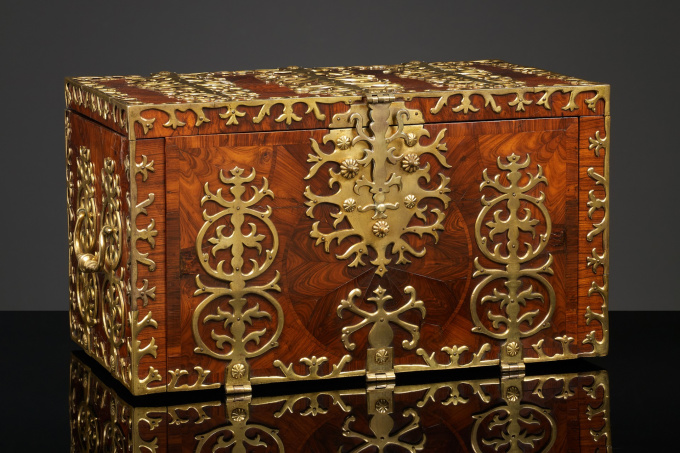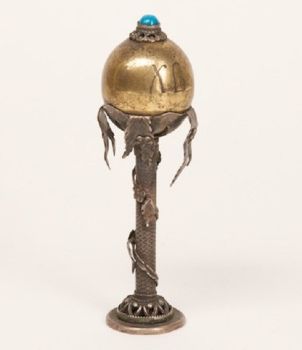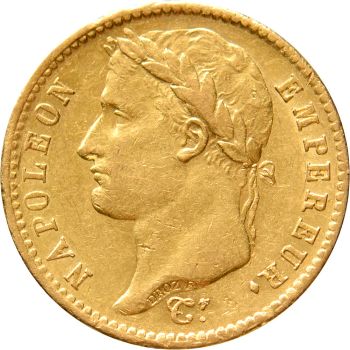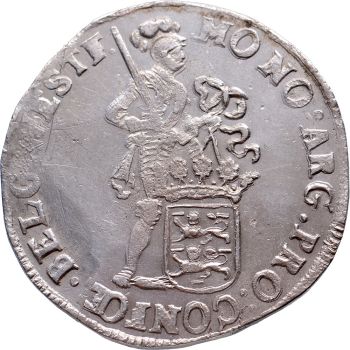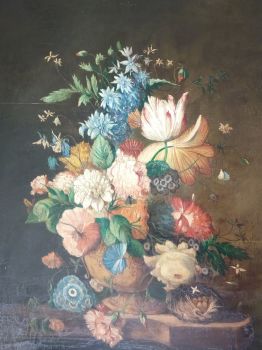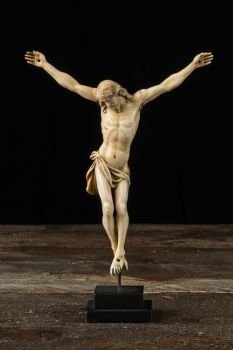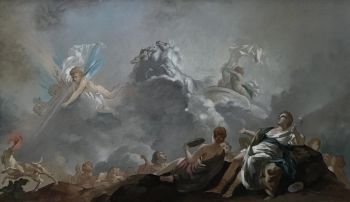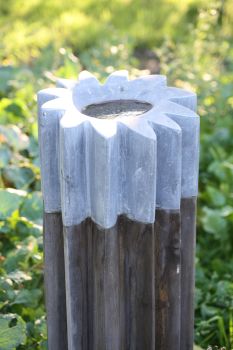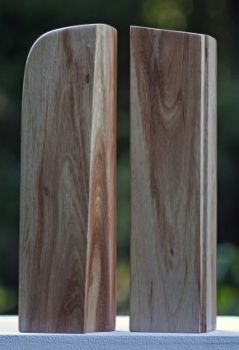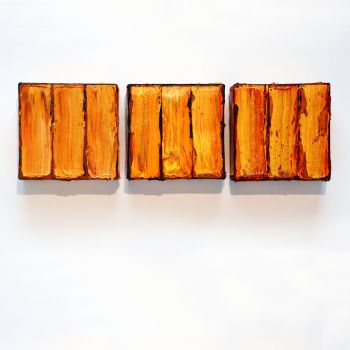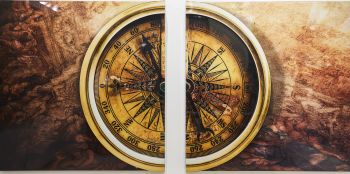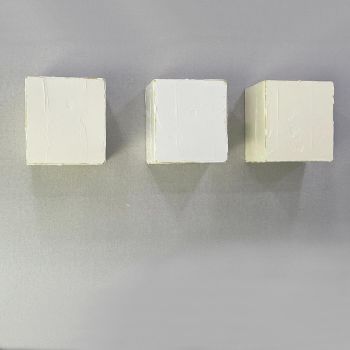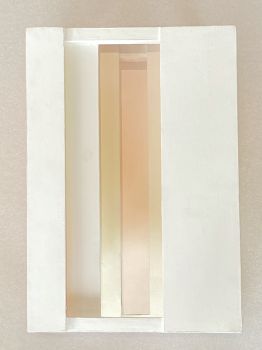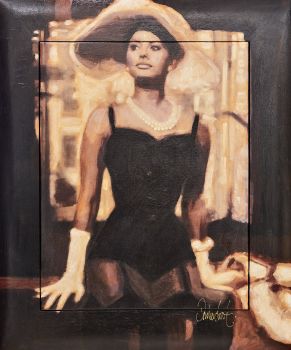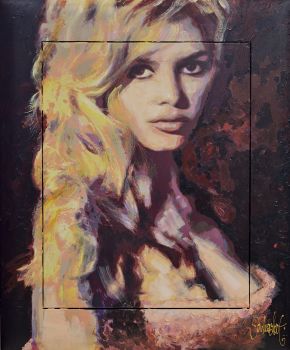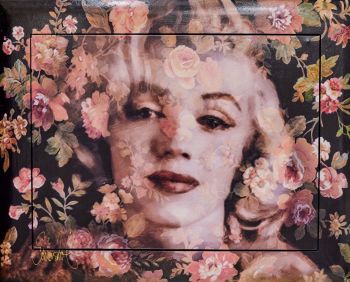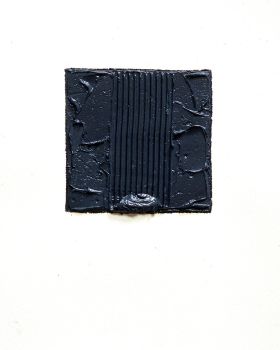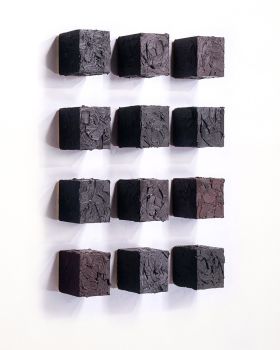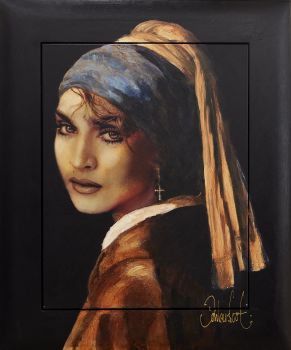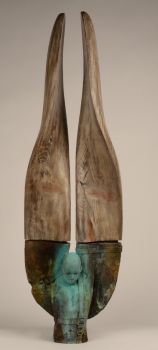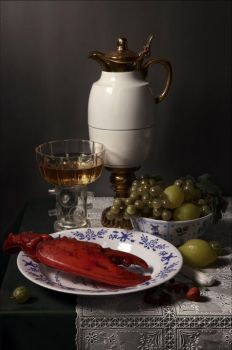Strongbox 1695 - 1710
Unknown artist
WoodOliveOak
34 ⨯ 62 ⨯ 36 cm
ConditionExcellent
Currently unavailable via Gallerease
- About the artworkAn oak strongbox with olive wood veneer. The box is richly ornamented with brass fittings (with traces of gilding) in the shape of leaves. The elaborate fittings should prevent the box from damage during long travels. The box can easily be moved with the help of the handles on the sides. Centrally there is a large escutcheon, that can be opened with a secret lever. When the lid is lifted, one gets access to the main storage space. In the lid there are to panels that can be opened to hold documents. There are four more secretive storage spaces in the interior. The actual keyhole, used to open the front panel, is hidden behind the lock of the lid.
With a key the front panel can be unbolted. The panel opens to the front. Once opened two small drawers are visible. Hidden to the eye are five more secret compartments. The interior is entirely finished in solid rosewood and rosewood veneer.
In general this type of strongboxes is considered to be French or Flemish. Nevertheless, the vast majority of these cases stem from England. Recent research hypothesizes they were made in London between 1600 and 1720.
The earliest evidence for the production of this type of strongboxes comes from the inventory of Edward Traherne, a renowned joiner who died in London in 1675. Traherne’s trading stock contained a number of shipping and traveling chests with various specifications. It may be noted that several of them still had to be finished.
English furniture makers advertised with “Strong-Boxes” throughout the first part of the eighteenth century. A typical quality of these boxes are the iron rods that are vertically positioned in the side panels and that can be screwed onto the wooden floor of a ship or carriage.
Literature:
London Metropolitan Archives, Orphans’ Court Record, Roll 117, Box 15.
Peter Thornton and Maurice Tomlin, ‘Ham House’, Furniture History, XVI (1980), pp. 1-194.
Th. H. Lunsingh Scheurleer, ‘Documents on the Furnishing of Kensington House’, Walpole Society, Vol. 38 (1960-62), pp. 15-58.
National Archives, LC9/280, 281.
Bowett, Adam. Woods in British Furniture-Making, 1400-1900: An Illustrated Historical Dictionary. Wetherby: Oblong Creative, 2012. 193-94.
Geoffrey Beard and Christopher Gilbert (eds), Dictionary of English Furniture Makers 1660-1840, Leeds (1986, pp. 16 & 200 & 378).
Coleridge, Anthony. Chippendale Furniture: The Work of Thomas Chippendale and His Contemporaries in the Rococo Taste, Vile, Cobb, Langlois, Channon, Hallett, Ince and Mayhew, Lock, Johnson and Others, Circa 1745-1765. Cirencester: Collectors’ Book Club, 1973. 44. - About the artist
It might happen that an artist or maker is unknown.
Some works are not to be determined by whom it is made or it is made by (a group of) craftsmen. Examples are statues from the Ancient Time, furniture, mirroirs, or signatures that are not clear or readible but as well some works are not signed at all.
As well you can find the following description:
•“Attributed to ….” In their opinion probably a work by the artist, at least in part
•“Studio of ….” or “Workshop of” In their opinion a work executed in the studio or workshop of the artist, possibly under his supervision
•“Circle of ….” In their opinion a work of the period of the artist showing his influence, closely associated with the artist but not necessarily his pupil
•“Style of ….” or “Follower of ….” In their opinion a work executed in the artist’s style but not necessarily by a pupil; may be contemporary or nearly contemporary
•“Manner of ….” In their opinion a work in the style of the artist but of a later date
•“After ….” In their opinion a copy (of any date) of a work of the artist
•“Signed…”, “Dated….” or “Inscribed” In their opinion the work has been signed/dated/inscribed by the artist. The addition of a question mark indicates an element of doubt
•"With signature ….”, “With date ….”, “With inscription….” or “Bears signature/date/inscription” in their opinion the signature/ date/ inscription has been added by someone other than the artist
Artwork details
Related artworks
Unknown artist
Een Gotische zuidelijke Nederlanden wandklok1580 - 1590
Price on requestNico van den Assem restauratie
Unknown artist
Silver Russian Presentation Easter Egg1880 - 1899
Price on requestH.W.C. Dullaert Art & Antiques Dealer
Unknown artist
Dutchmen in miniature (Netsuke)1700 - 1900
Price on requestZebregs & Röell - Fine Art - Antiques
1 - 4 / 12Unknown artist
Cristallo façon de Venise Drinking Glass1600 - 1650
Price on requestPeter Korf de Gidts - Antiquairs
Johannes van Dreght
Antique Dutch still life flowers in vase1740 - 1800
Price on requestGallerease Selected
 Curated by
Curated byDanny Bree
Unknown artist
A Surinam-themed Amsterdam long-case clock1746 - 1756
Price on requestZebregs & Röell - Fine Art - Antiques
 Curated by
Curated byGallerease Magazine
1 - 4 / 24Unknown artist
Japanese transition-style lacquer coffer 1640 - 1650
Price on requestZebregs & Röell - Fine Art - Antiques
Unknown artist
A rare Japanese export lacquer medical instrument box1650 - 1700
Price on requestZebregs & Röell - Fine Art - Antiques
Unknown artist
AN IVORY NETSUKE OF A DUTCHMAN FROLICKING WITH A SMALL BOY18th century
Price on requestZebregs & Röell - Fine Art - Antiques
Unknown artist
A MARINE IVORY NETSUKE OF A DUTCHMAN HOLDING A CHINESE FAN18th century
Price on requestZebregs & Röell - Fine Art - Antiques
1 - 4 / 24Rene Rietmeyer
"BUDAPEST, HUNGARY, MARCH 2005"2005
Price on requestEuropean Cultural Centre Collection
Unknown artist
A JAPANESE MODEL OF A NORIMONO, A PALANQUIN1650 - 1700
Price on requestZebregs & Röell - Fine Art - Antiques
1 - 4 / 24

